Today we are reeling from the “coup that wasn’t” that occurred in Russia in Late June 2023.
Wagner rolls back and leave Moscow
In less than 24 hours Wagner have rolled back and left Russia
Prighozin is leaving for BELARUS
Wagner PMC soldiers who didn’t participate in the Mutiny get new MoD contracts
In 24 hours
No Moscow
No Civil War
So like i said ,
Putin was never Prighozins Target
He was BAITED into organizing a march on Russia
He was used by Putin into convincing all hardliners that Shoigu and Gerasimov be eased out and Putin not take the fallout politically
My guess is Surovikin will get overall command
Wagner is part of MoD
Prighozin is regarded traitor by all of Russia
Putin noted which Russians offered resistance and which Russians didn’t and MADE A LIST as a LOYALTY METER
And PUTIN SHOWED THE WEST HOW A POTENTIAL CIVIL WAR CAN BE CHANGED IN A MERE 24 hours
If this was the West, you would have the cities bombed by now
Man of the Hour — LUKASHENKA
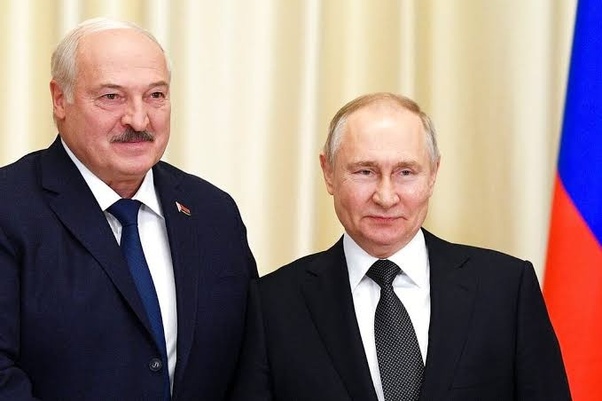
APPLAUSE!!!!
Conveniently there to talk to Prighozin and end the situation
If you tell me the whe thing where Wagner invades , holds a city for 24 hours as people are still rushing to watch the latest movies and malls is logical
It’s not at all logical
Keshto Pat , Ivan Novoselov and Maxim Nesterenko
RESPECT!!!!!
To others especially Indians who believed Putin would be deposed and Prighozin would be moving to Moscow
ITS WHY THOSE 200 YEARS HAPPENED (1757–1947)
Untold Truth: Rent-a-Girlfriend – A Popular Trend in China
Is it possible to rent a girl in China? How much will it cost? What is included in the services of a girl for rent? We will answer these and many other questions in as much detail as possible in this video! Renting girls in China for a long time is a fairly frequent service, why do the Chinese so often resort to renting girls? How much do these girls get, and what is included in the cost of their services? We have to answer these and many other questions in this video! Watch this video from the beginning to the very end to know everything about renting girls in China!
The wackiest thing in history has just unfolded.
12:50 AM EST
So, a few hours ago, I was pretty sure the Russian state was going to utterly collapse, and that the Ukraine would seize Russian territory.
It now appears, by some fantastic twist, that this is actually not going to happen.
I have zero idea how it is possible that Prigozhin had everything lined up to take control of Southern Command, and then was like “ah – nah, I guess I’ll just surrender.”
He could have just been drunk. But he had to have lined this all up with the FSB and the military, and that would have been a very big thing, to do that all in secret, and get that many powerful players on his side.
As of right now, he has stopped the push towards Moscow, and is possibly en route to Belarus.
Just out of nowhere, it was announced that Prigozhin agreed to talks with Lukashenko, President of Belarus, and then hours later it was announced that he was calling the whole thing off.
This is part of the statement from Belarus:
“Evgeny Prigozhin accepted the proposal of President Alexander Lukashenko to stop the movement of the armed men of Wagner in Russia and to take further steps to de-escalate tension.” It added that Prigozhin had been offered “an advantageous and acceptable option for resolving the situation, with security guarantees for the Wagner PMC fighters.”
This is still in flux, or whatever, and something could still go wrong, but that is where we are apparently at as of Sunday morning in Russia. Actually, that statement is 12 hours old, at time of writing, but nothing seems to have changed.
Wagner peacefully left the base in Rostov, surrendering control, with the troops going back to the territories of the former Ukraine and Prigozhin going wherever he is going. He should be executed, but I guess he can’t be if he made a deal. I think he will most likely end up dead in the next few months either way.
It really, really, really looked like this was going to turn into a full-on civil war, and the Ukraine war would collapse, and Russia would collapse as a country, breaking into different parts like the US wants it to.
I have no idea how Prigozhin was so competent to organize taking over Southern Command and then just giving up. Something must have went wrong.
The chaos now is over, the borders and airports are back online, the military seems to be totally off the streets in Moscow.
There are going to have to be purges of the FSB and whoever else sided with Prigozhin.
The people who said the whole thing was a staged event are going to claim victory. I don’t really understand what the purpose of faking this would be, but the way it collapsed, and the way none of it made any sense, will allow those theorists to say “see, this was the plan all along!”
How this will affect Russia and the war effort in the longer run, I do not know. I think there should be an increased desire to escalate, and Putin is definitely not going to want to look weak after all of this, so he will probably back a move toward “total war” or as I like to call it “Blitzkrieg.”
Yesterday, I said that Putin’s legitimacy would be gone if it wasn’t solved in 12 hours, and 8 hours after I said that, it was solved. So I do not think he’s lost legitimacy. It looks bad, but not so bad he’d need to resign.
I do think the fact that so many people would back Prigozhin in his insane plan shows that there is a very real desire for Putin to get more aggressive in the Ukraine, and that has to be taken into account.
But wow.
This went from being the worst thing ever to the most confusing thing I’ve seen in my life.
Really, this was truly a weird 36 hours.
What screams “I’m educated, but not very bright”?
I bought an old farm with a barn. The roof of the barn was sagging and the walls were bulging out. I contacted a local contractor to fix it. He was known as the best in the business. He studied it for a while and made the following offer:
“We’ll jack up the entire barn and then reinforce the walls and install some pulleys to draw in the walls and then we can put in support beams from the roof apex down to the ground and then slowly over a week or two, lower the barn back onto the new beams. This will give the roof time to adjust and bend back in shape. It will cost about $50,000.”
I listened and then said:
“What if we pin the walls to the roof joists and then put in beams and screw-jacks along the roof centerline and jack up the roof slowly over time? The rising roof will draw in the sides. Then we can replace the screw jacks with 10×10 beams”. How much would that cost?
The contractor thought about it and said: “Yeah, that would work, too. It’d cost about $3000.”
Reality
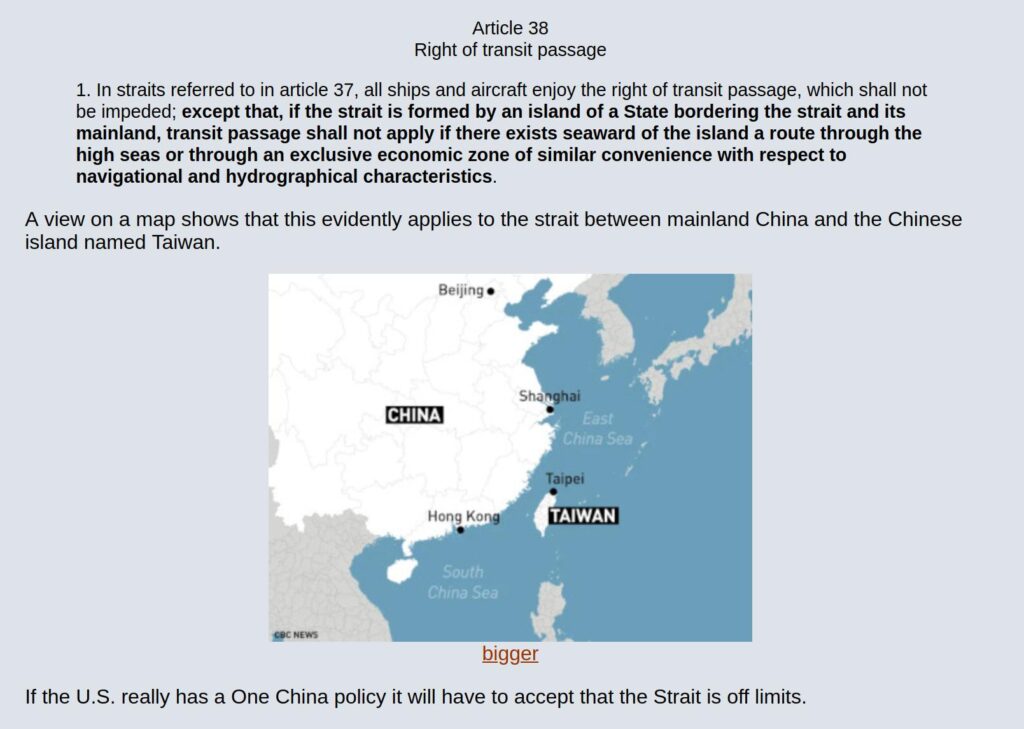
Is it safe to visit China as a type 1 diabetic, or should you avoid doing so since Chinese food is so high in carbs?
I think it would be an excellent sign of good character if you can just take a step back and acknowledge that the entirety of what you know about “Chinese food” is either based entirely on the “Chinese food” in your country that has been adapted, sometimes quite extensively – to the point that it is no longer seen as Chinese food in the eyes of Chinese – to suit the tastebuds of the people in your country, OR just a tiny speck on the tiny tip of a Titan-sized iceberg.
I mean, I’ve been eating Chinese food since I’ve been a kid, and yet, I dare not say I know any more than 1% of all the dishes from all the various Chinese cuisines. Sometimes, a friend will mention this or that dish from their hometown, and I would be like “what is that? Never heard of it before…” and it just leaves me with the impression that I will never be able to sample every Chinese dish out there in this lifetime – it would be too tall of an order for one lifetime. Give me two or three lifetimes, then I might be able to give it a shot.
Things like “Chinese like to eat this and this for breakfast” or “Chinese like to eat more vegetables than meat” or “Chinese are very obsessed with meat” don’t hold up well when you’re speaking of 1.5 billion people – just like it wouldn’t work if you say all Americans love eating donuts or Girl Scout cookies. See: countless arguments on Chinese social media whether “savory” or “sweet” tofu pudding is better, or whether glutinous rice dumplings should be “sweet” or “savory”.
There are Chinese who don’t like to eat rice and who don’t even own a rice cooker.
There are Chinese who won’t even touch savory tofu pudding if you paid them to eat it.
There are Chinese who don’t like eating green leafy vegetables.
Generalizations break down very quickly when they encounter reality.
IMHO, the much better attitude to adopt is:
Every cuisine has dishes that have carbs. If you don’t want to eat carbs, don’t order dishes that have carbs. Don’t cook dishes that have carbs. Don’t eat dishes that have carbs. Order, cook, eat all the other dishes that dont have carbs.
I mean, let us imagine if the assumption in the question is true, that Chinese food is indeed “high in carbs”.
If that were indeed true, then Chinese folks who suffer from diabetes would …. what?
Starve?
Or go “I have diabetes now. I think I should change to a Western diet. Let my new Western diet begin. This will mark a new beginning for me. Ho ho ho.”
I know quite a few Chinese peeps with diabetes.
They have neither starved to death, nor changed to a Western-style diet.
To round off this answer, I’ll provide some pictures of home-cooked Chinese meals.
Everything that has carbs, I’ll cross off in red.
By doing this, you’ll see that you still have a lot of other dishes to enjoy.
There’s some tofu in the various dishes, usually paired with meat.
As far as I’m aware, tofu does have a bit of carbs, but it’s generally viewed as a low carb food.
Here’s the lunch my cousin and I prepared two days ago.
Don’t eat the rice.
Don’t eat the dish on the top left, because it has julienned potato strips in it.
I’m not sure whether North Americans or Europeans eat potatoes, but potatoes do have carbs, so that’s why I’ve crossed this dish off.
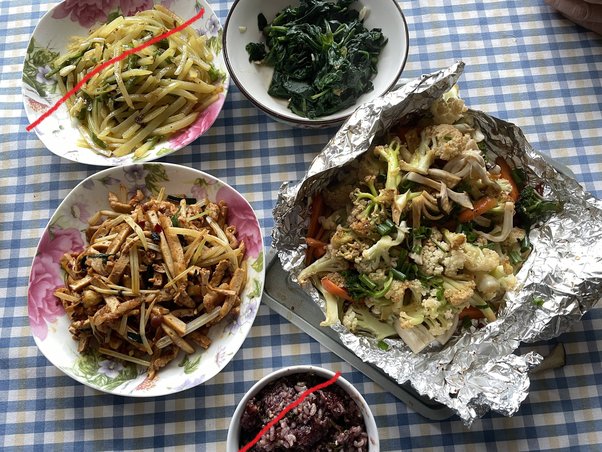
Don’t eat the rice.
There are a few small fermented black beans in the meat+veg dish on the right, but hopefully that still counts as low carb.

Don’t eat the rice.

Don’t eat the julienned potato strips.
Don’t eat the peanuts.
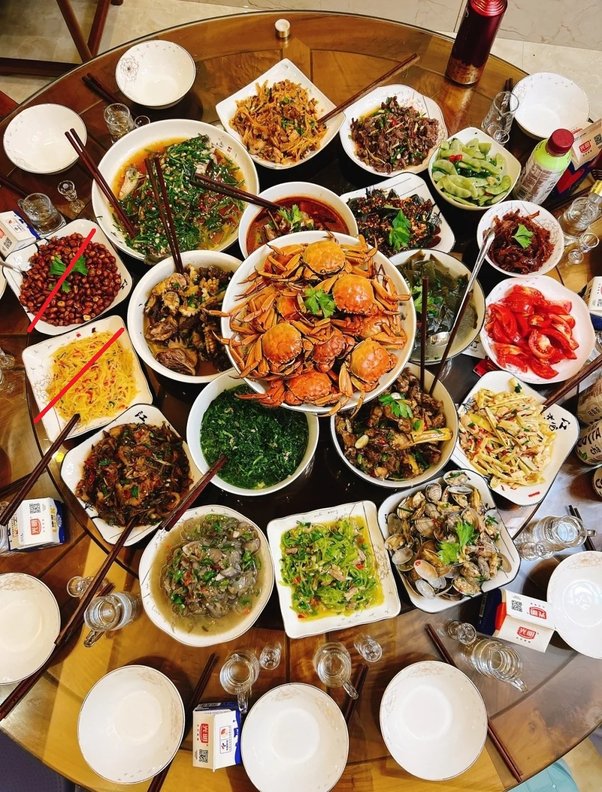
Don’t eat the noodles.
Don’t eat the glutinous rice.
Don’t eat the fruits.
Don’t eat the snow fungus dessert and cake.

You’re good to go.

You’re good to go.
You can avoid the soy sauce dips easily enough.

You’re good to go.

Conclusion:
Just like in any cuisine, when it comes to the various Chinese cuisines, if you don’t want to eat carbs, then order, cook, eat those dishes that do not have carbs.
From my experience the above is the best way to avoid carbs for people who are looking to avoid carbs.
Advice From Cats On How To Survive The Holidays

The holidays can be quite stressful—between buying gifts, coping with family, attending various functions, and realizing that mixing Jagermeister and egg nog together to make “Jag Nog” was a bad idea, it can get a bit overwhelming. Fortunately, the felines behind You Need More Sleep: Advice from Cats are here to give you all the tips you need to enjoy a joyful, peaceful, and—most importantly—restful season.



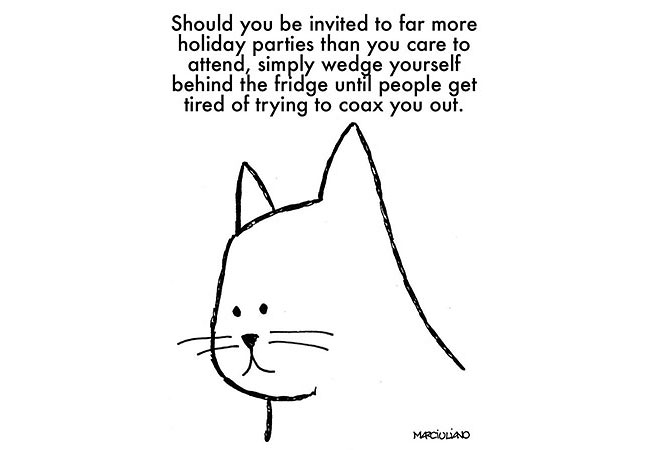



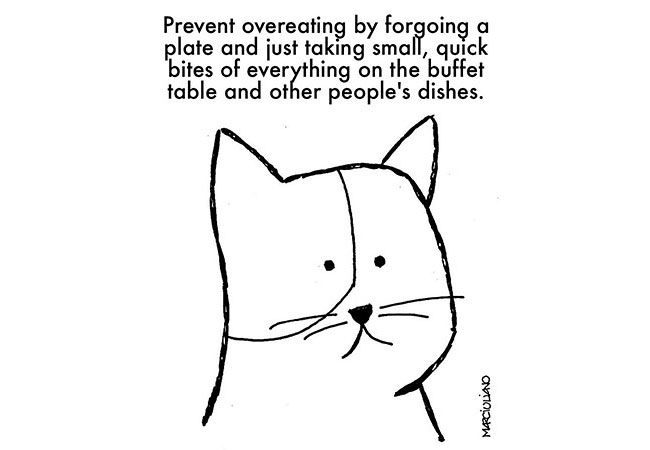


Why is Britain so set on escalating the war in Ukraine?
Tanks, depleted uranium shells, long-range missiles, F16s: hardly a week goes by without some news of how Britain is upping the ante again.
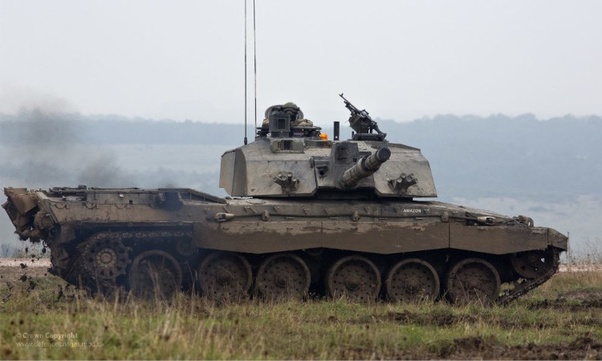
The deeper the economic crisis bites, the more desperately the ruling class is throwing everything it can into military confrontation. Only through victory in war will it stand a chance of keeping its failing system alive for another generation. The world’s masses owe it to their children to make sure that such a victory is never achieved.
By Proletarian writers from the Communists (dot) org
The recent announcement that Rishi Sunak’s government would be providing first depleted uranium shells to Ukraine and then Storm Shadow long-range missiles represent two of the latest of examples of the British government’s consistent and active efforts to escalate the war in Ukraine . It is doing so with zero concern for the lives of British workers and even less for those of Ukrainians.
Reckless and criminal escalation
This was demonstrated very clearly when the Ukrainian military stored the aforementioned depleted uranium shells in a large ammunition depot near the town of Khmelnitsky. When Russian armed forces blew up this arms store, a cloud of radiation was dispersed across the town, posing both immediate and long-term health risks to everyone resident or present in the area.
Not for nothing did the Russian foreign ministry warn the Sunak government not to provide such weapons to its Ukrainian proxies. Russian armed forces are not using such weapons in Ukraine themselves, knowing well the health risks they pose.
Russia had previously warned very strongly against the use of such weapons: “If Kiev is supplied with such shells for Nato heavy military equipment, we will consider this as the use of dirty nuclear bombs against Russia with all the ensuing consequences,” a statement said. (Russia warns Britain against supplying Ukraine with depleted uranium shells , Donbass Insider, 22 March 2022)
The cancer epidemics in parts of Serbia and Iraq following Nato’s widespread use of depleted uranium munitions there are just two of the many war crimes perpetrated by British and US forces in their wars of plunder that are carefully ignored by British and US establishment politicians, journalists, lawyers and scientists.
How far across Ukraine and neighbouring countries this radiation and its effects might spread is at this time unknown. Nor can we yet know how Ukraine’s food exports will be affected. In all likelihood, no meaningful effort will be made to find out by our self-identifying ‘defenders of human rights’.
Sanctions war has failed
These latest reckless escalations by British imperialism come hard on the heels of bitter admissions carried in the Spectator and the Telegraph that the “shock and awe” sanctions war that was supposed to “reduce the rouble to rubble”, in the words of US president Joe Biden , has been an abject failure. The aggressive western wagers of this economic war had confidently expected to bring about the collapse of the Russian economy, triggering either a mass uprising by a hungry and unemployed populace or some other political crisis that could result in the long dreamt-of regime change in Moscow.
But, owing to the preparations the Russian government has been making since 2014, the severity of the sanctions regime has been mitigated both by increased state intervention in the Russian economy and by redirecting the country’s trade flows eastwards – in particular to China, Iran and India. The workers and economies that are being destroyed by the sanctions are not those of Russia but of the west, most specifically those of the European Union and Britain, where residents and industry alike have been suddenly cut off from the cheap and reliable flow of Russian oil and gas on which they have depended for decades.
Now, having failed to defeat the Russians either economically or militarily, the imperialists are getting desperate.
The aim of the war in Ukraine, from the perspective of US imperialism, is to destabilise Russia itself and, ultimately, to secure regime change (ie, the installation of a client regime in place of an independent one) and, ideally, the fragmentation of the country. This is all in order that the USA and its junior partners in Europe can seize full, unrestricted control of Russia’s immense natural resources.
With the global overproduction crisis deepening every day, the contradictions of the imperialist economic system are becoming ever more apparent. US imperialism, mired in a mountain of bad debt , has reached the point where it is not only seeing long-term stagnation at home but is also losing control over markets overseas that it has long sought to dominate by means of its economic, technological and military might.
Meanwhile, African nations are increasingly trading with China and turning to Russia for energy and security partnerships, thus further deepening the contradictions faced by US imperialism and forcing it down the road of trying to remove both the Putin-led government in Moscow and the Communist party (CPC) in China. The removal of these two rival centres of power, which are working increasingly closely together, is necessary for US imperialism if it is going to succeed in ‘solving’ its crisis via the ruination of its opponents and the destruction of the opportunities for independent development that they are offering to the oppressed countries via Brics, the Shanghai Cooperation Organisation (SCO ) etc.
Decline and decay of British imperialism
British imperialism, likewise mired in crisis and tied hand and foot to the US imperialist bandwagon, is equally desperate for these plans to be brought to fruition, hence its reckless escalation of the war in Ukraine by supplying long-range missiles and depleted uranium munitions. The British ruling class has played a subservient role to US imperialism since at least 1956, when it failed to win its war to bring down Abdul Nasser’s anti-imperialist pan-Arabist Egypt .
The decay of British imperialism actually has its origins ever earlier than this. In fact, even at the highest point of the development of British capitalism, the seeds of its own terminal crisis had already been sown. As Karl Marx and Friedrich Engels pointed out in Capital Volume 2, there is a tendency inherent within the system for capitalists not only to maximise profitability at all costs but to actually cut out commodity production altogether if they possibly can.
“The process of production appears merely as an unavoidable intermediate link, as a necessary evil for the sake of money-making. All nations with a capitalist mode of production are therefore seized periodically by a feverish attempt to make money without the intervention of the process of production.” (Chapter 1 , 1885)
Marx identified a tendency that would be explored and fleshed out by VI Lenin in his work Imperialism the Highest Stage of Capitalism. Written in 1916, at the height of the first world war , Lenin’s examination of the development of imperialism included an analysis of the ongoing deindustrialisation of Britain. He showed how the development of imperialism was linked to the declining profitability of commodity production for the home market in Britain in the latter part of the 19th century.
At this point, British capitalists were able to realise far greater profits by exporting their capital to the colonised nations, where resources and land were cheaper and where labour could be exploited in a far more profitable fashion (ie, with even greater brutality). This brought the British ruling class into conflict with other imperialist powers, mainly the newly unified Germany. The competition for markets, resources and hyper-exploitable sources of labour led (ultimately) to the mass slaughter of World War 1.
As a result of the war, however, the British ruling class was much weakened, and it ultimately failed to restore its position as the overwhelmingly dominant power in the world, partly because it had heavily indebted itself to the rising power of US imperialism during the course of the war.
It was only after World War 2 though that the crisis of British imperialism was fully realised. Britain began to lose control of its colonial possessions (starting with India) and faced the reality of having to depend upon US imperialism for economic and military support both for reconstruction at home and for exploitation of the oppressed nations abroad.
A faction within the British ruling class tried to resist this subordination to the USA, but it was decisively defeated in 1956, partly due to the anti-imperialist struggles of the Egyptians and also because the US ruling class would not tolerate what it regarded as its British junior partner operating without its consent. Following the Suez debacle, the British ruling class realised it had little choice but to fall in line behind the USA if it wished to continue to operate in the markets it still dominated abroad, even after being forced to give up direct control of most of its empire.
In order to maintain their profits, Britain’s financiers need to be able to move capital anywhere in the world. They require all barriers to this to be knocked down, and, since WW2, the USA is the only imperialist country with the global economic and military power to be able to do this. The state of British imperialism is one of profound and multiple crises: it has undergone a longer decay and is much more vulnerable than the USA is.
The fortunes of the imperialist powers ultimately rest on convincing the oppressed and developing nations of the world that they have to accept the terms dictated by countries like Britain if they want to escape being put under an economic siege or subjected to military attack.
Anti-imperialist bloc cutting the ground from beneath the imperialists’ feet
Today, the economic fortunes of British imperialism are entirely tied to US economic and military power. The British ruling class has been cutting its own armed forces down for many years now, so it depends ever more heavily upon the USA to facilitate the ability of British finance capital to keep on plundering the world.
The British state may spend a large amount of defence, but it does not maintain the kind of forces that would be capable of taking on the Russian or Chinese armies for more than a few days. What Britain’s armed forces have specialised in since their failure in the Iraq war is in waging wars by proxy, training and directing jihadists in Libya, mercenaries in Yemen and fascists in Ukraine to do the heavy lifting while they remain in the shadows – advising, directing and facilitating.
If Nato’s fascistic Banderite forces in Ukraine lose their war with the Russian Federation, which they show every sign of doing in the near future, this will be a defeat for US imperialism of an even greater magnitude than its humiliating retreat from Afghanistan in 2021. Many nations that are currently dominated by British and US imperialism will see the defeat of the Nato-aligned forces in Ukraine as being a clear sign that the US-led imperialist bloc has been fatally weakened.
This in turn will undermine British imperialism’s ability to continue to exploit countries in Latin America, Africa and Asia . If US imperialism decays or collapses entirely, the British ruling class will be fatally weakened as well, not only in terms of the markets and resources it seeks to control overseas, but also in its ability to contain the class contradictions within Britain society itself.
This is why the British ruling class is desperate to secure the destruction of the Russian and Chinese governments. Because British imperialism needs to ransack huge areas of the world if it is to try and resolve the deep crisis in which it is enmeshed, and the anti-imperialist governments of Russia and China are standing in the way of that goal.
That is how we must understand Sunak’s declaration at the recent G7 meeting in Hiroshima that China is “the biggest challenge of our age to global security and prosperity”.
Of course, Sunak was referring solely to the ‘security and prosperity’ of the class he represents – the class of billionaire owners of capital. All that will come to the majority of the world’s workers from the strengthening of our exploiters is the prolongation of the existence of the system that keeps them immiserated, condemned for another generation and more to the miseries of unemployment, poverty , crisis and war.
Those of us who oppose British capitalism at home must learn this lesson: that there can be no victory over capitalism at home without also destroying British imperialism’s ability to loot abroad. Only with the departure of this parasitic system can the British working class advance in solidarity with the workers of the world to a bright and fulfilling future.
The Poverty In Mississippi Is Unlike Anything You’ve Ever Seen
Shaker Strawberry Summer Pudding

Ingredients
- 1/2 loaf white bread, sliced
- 1 quart ripe strawberries
- 3/4 to 1 cup sugar (depending on the sweetness of the berries)
Instructions
- Line a 9-inch square pan with aluminum foil or wax paper.
- Remove the crust from the bread.
- Mash and sweeten strawberries.
- Place the bread slices slices on the bottom of the prepared pan.
- Spoon strawberries over the bread and alternate berries and bread until pan is filled. Cover with wax paper slightly smaller than the pan. Chill at least 8 hours or overnight.
- To serve, invert on a platter. Top with whipped cream. Scatter fresh berries on top and around edge.
Pay it forward
Waiting in line to pay for groceries while maintaining a 6ft distance, this man cut in line. He didn’t appear to notice what he’d done.

The person he skipped didn’t say anything, just maintained the proper distance.
When it was time for the man to pay he reached in his back pocket and pulled out a small note pad. He’d forgotten his wallet.
He looked a bit disappointed and embarrassed. The person he skipped stepped up and told the cashier they’d take care of his groceries. (Which only consisted of Milk and Chocolate Chip Cookies.)
He was more than grateful. He kindly thanked them and off the man went.
Upon arrival to the register, the cashier asked: “He cut you off and you paid for his groceries.. Why??”
“They calmly replied with a smile: “I hope that if one day my Dad forgets his wallet, someone will step up and buy his Milk and Cookies”
With all the negativity going on in the world..I thought it would be nice to share this moment.
A little kindness goes a long way. Why not pay it forward?
Shaker Spoon Bread

Ingredients
- 1 cup cornmeal
- 1 quart (4 cups) sweet milk
- 3 eggs, separated
- 2 tablespoons butter
- 1 3/4 teaspoons salt
- 1/2 teaspoon baking powder
Instructions
- Scald milk and add cornmeal gradually. Cook until thick.
- Pour small amount over beaten egg yolks. Return to heat and cook a few minutes longer.
- Add butter and fold in beaten egg whites.
- Add baking powder and salt.
- Pour into greased baking dish and bake at 325 degrees F for 1 1/2 hours, stirring once after the first 15 minutes of baking.
Wagner “COUP” On Putin Ends
Why do people explain a link between obesity and poverty by saying that fast food is “all they can afford?” Making rice and beans at home is cheaper and healthier.
In the 1930s, a full decade or more before the advent of fast food, George Orwell put his finger on this problem. His book The Road to Wigan Pier chronicled the lives of the poor and unemployed in Northern England’s distressed mining regions. Orwell described their insufficient diet and brilliantly explicated the psychology underlying the poor’s consumption patterns:
The basis of [the poor’s] diet, therefore, is white bread and margarine, corned beef, sugared tea, and potatoes—an appalling diet. Would it not be better if they spent more money on wholesome things like oranges and wholemeal bread or if they even, like the writer of the letter to the New Statesman, saved on fuel and ate their carrots raw? Yes, it would, but the point is that no ordinary human being is ever going to do such a thing. The ordinary human being would sooner starve than live on brown bread and raw carrots. And the peculiar evil is this, that the less money you have, the less inclined you feel to spend it on wholesome food. A millionaire may enjoy breakfasting off orange juice and Ryvita biscuits; an unemployed man doesn’t. Here the tendency of which I spoke at the end of the last chapter comes into play. When you are unemployed, which is to say when you are underfed, harassed, bored, and miserable, you don’t want to eat dull wholesome food. You want something a little bit ‘tasty’. There is always some cheaply pleasant thing to tempt you. Let’s have three [penny’s worth] of chips! Run out and buy us a twopenny ice-cream! Put the kettle on and we’ll all have a nice cup of tea! That is how your mind works when you are at the P.A.C. [public assistance] level. White bread-and-marg and sugared tea don’t nourish you to any extent, but they are nicer (at least most people think so) than brown bread-and-dripping and cold water. Unemployment is an endless misery that has got to be constantly palliated, and especially with tea, the Englishman’s opium. A cup of tea or even an aspirin is much better as a temporary stimulant than a crust of brown bread.
What is the meaning of the term “Karen” in slang? What is it used for, and who coined this term?
A “Karen” is a woman (naturally), white (always), middle-aged (30–55), attractive solely because of her hair, makeup and clothing, blonde (usually), and middle-class or higher. As a customer or citizen, she is demanding, entitled, privileged and impossible to satisfy in any reasonable manner.
Karen wants you to take her expired coupon and, when you won’t, she wants to speak to your supervisor. Karen calls the city to ask them to stop road work in her area from noon to 5 p.m. so her child can have a nap, then calls her city councilor when her request is refused.
It’s use was popularized by African-Americans on Twitter in 2018.
African Americans have had slang terms for such an individual since before the American Civil War, including “Miss Ann”, “Becky”, “Barbecue Becky”, “Cornerstone Caroline” and “Permit Patty”. “Karen” is the type of person who would call the cops on kids running a lemonade stand without a permit.
The first use of “Karen” as a pejorative refers to an ad for the Nintendo Switch from 2016 where the woman on the right was referred to as “antisocial Karen”. Unlike the typical stereotype, she’s a brunette.

Before the breakout on Twitter, “Karen” was the subject of many memes on Reddit in 2017.
Naturally, white people co-opted the term. The UK paper The Guardian, noting the rash of women calling the police on black people engaged in perfectly legal behaviors like barbecuing in a public park or pointing out that Central Park has a leash requirement for dogs, dubbed 2020 “The Year of Karen”.
Psychologists say the stereotype is the result of a pattern of “weaponizing victimhood” where a group of people who have suffered social discrimination in the past don’t just ask for empathy with their plight but instead use it to claim rights over and above everyone else, including both present and past victims of similar discrimination. Karens are hardly the only group that do this.
Why Africa is angry at the “West”
Train derails into Yellowstone River sparking fears of hazardous spill
A large emergency response has been launched in Montana after a freight train collapsed into the Yellowstone River
Officials have introduced emergency measures amid fears the train was carrying hazardous materials
The toxic spill comes months after another train derailment sparked chaos in East Palestine, Ohio
Montana residents have been warned to conserve water after a freight train potentially carrying hazardous materials collapsed into the Yellowstone River.
A large emergency response has been seen in the area, amid concerns of a toxic spill after the bridge collapsed early on Saturday morning.
It was initially feared oil or petroleum was contained in the cargo train, but the Yellowstone County Sheriff’s Office said it was later determined they contained asphalt and ‘a second substance that officials are working to confirm’.
Water treatment facilities throughout the area have introduced emergency measures due to the crisis. Despite warnings to conserve water, officials said there is currently no threat to life in the area.
The toxic spill comes months after a cargo train derailment in East Palestine, Ohio sparked mass evacuations as residents were subjected to painful side effects to another hazardous runoff.
A statement re-posted by the Yellowstone County Sheriff’s Department on social media confirmed no injuries have been reported in the incident.
‘A total of 8 rail cars are involved and in a great stroke of luck, none contained oil,’ the post said.
‘The cars contained asphalt and a second substance that officials are working to confirm. Both of the substances are described as “slow moving” and have not gone much past the initial scene.
‘The public is asked to stay away from the (scene) to prevent congestion.’
Montana Fish, Wildlife and Parks Department also warned locals to avoid water from certain parts of the river.
‘From Indian Point to Buffalo Mirage, avoid water due to possible contact with contaminants,’ the department tweeted.
A multi-agency effort was on the scene Saturday, including Stillwater County Emergency Services, the Yellowstone County Sheriff’s Office and Columbus Fire & Rescue.
Water treatment facilities in Laurel, Billings and Lockwood shut down their headgates in response to the potentially toxic spill.
The Yellowstone County Disaster and Emergency Services department said irrigation canal companies are also implementing protective measures.
According to the Billings Gazette, the train fell into the water after a bridge it was crossing collapsed under the weight of the carriages.
The outlet claimed the bridge had recently been battered by high water levels as a result of storms in the south-central Montana area.
The potential toxic spill comes months after a similar incident in East Palestine, Ohio, sparked mass evacuations when hazardous chemicals leaked from another train derailment.
Locals reported side effects including eye and throat irritation, and some even claimed pets had died due top the toxic fumes. The chemicals on board the Ohio derailment were not the same as those from Saturday’s incident in Montana.
Putin just dropped a BOMBSHELL & outplayed the Western coup | Redacted w Clayton Morris
Updated 19 October, 2018 – 23:02 Caleb Strom
Pleistocene Epoch: Humans, Welcome to Earth

The Pleistocene epoch is a geologic epoch which began around 2.6 Mya (Million years ago) and came to an end around 11,700 BP (Before Present). It is characterized by lower sea levels than the present epoch and colder temperatures. During much of the Pleistocene, Europe, North America, and Siberia were covered by extensive ice sheets and glaciers. The Pleistocene was an important time because it was when the human genus first evolved.
The flora and fauna today also more or less reached their current form during the Pleistocene. Most Pleistocene animals and Pleistocene plants also exist in the Holocene. Furthermore, the Pleistocene epoch was the last geological epoch in which humans had relatively little impact.

Pleistocene Geology and Climate
The Pleistocene glaciations are among the defining geologic events of the Pleistocene. Much of North America was covered by the Laurentide ice sheet and northern Europe and Siberia were covered by the Eurasian Ice Sheet Complex. The size of the ice sheets resulted in lower sea levels and dryer climates. Britain was a peninsula and the Indonesian islands were connected to the Southeast Asian mainland, for example. There were also glaciers on Mauna Kea of the Hawaiian Islands.
While parts of the world were dryer – such as central Europe, which was mostly covered in tundra, other parts of the world were wetter and greener. The American southwest, for example, contained grassland with numerous lakes. The Sahara Desert was also covered in savannah grassland for many parts of the Pleistocene. Parts of the north-eastern Arabian Peninsula were the site of an enormous oasis. It is even possible that this ancient, wetter environment may have helped inspire stories like the Garden of Eden or have been the original Garden of Eden itself.
Pleistocene Animals
Many of the animals common today were also common in the Pleistocene. Deer, big cats, apes, elephants, and bears could all be found in a Pleistocene landscape. There were also animals that were common which have since gone extinct, such as mammoths, mastodons, saber-toothed cats, giant ground sloths , and pre-human hominins .
Europe and Asia had significant populations of African fauna. Cave paintings and paleontological finds in Europe reveal that rhinoceroses, lions, and hyenas were all common at that time in southern Europe. The island of Sicily was also inhabited by a dwarf elephant species until surprisingly recent times. Northern Europe was covered in glaciers and inhospitable, while central Europe was tundra. Southern Europe, however, contained forests and was inhabited by numerous species of megafauna, most of which have since died out.
Lions were also much more common in Asia, as were rhinoceroses and elephants. There were even rhinoceroses living on the islands of the Philippines. Apes were also more common. Until about 300,000 BP, Gigantopithecus, possibly the largest ape ever to live, flourished in Asia.

Pleistocene North America is known for its impressive megafauna populations. The more well-known are the woolly mammoths and mastodons. North America was also inhabited by American lions, North American llamas, and giant ground sloths, all of which are extinct today.
The continent of Australia has been separated from Eurasia since the Mesozoic. As a result, Australia has very unusual vegetation and wildlife. Pleistocene Australia was no different. Australia was inhabited by extraordinary creatures such as kangaroos the size of a rhinoceros and other giant marsupial mammals. There were also numerous giant flightless birds such as moas in New Zealand, rheas in South America, and ostriches in Africa and Asia that had to compete with large mammals.

Pleistocene Humans
Another important development on the Pleistocene timeline was the emergence of the human genus: Homo. Humans probably evolved out of bipedal apes, such as the Australopithecines and Ardipithecus Ramidus . These early bipedal apes are classified as hominins. Hominins first evolved near the end of the Miocene epoch (25-5 Mya) in south and east Africa. Other than their upright posture and bipedalism, these hominins were not significantly more human than previous apes.
Their skeletons indicate that they resembled modern apes such as chimpanzees and their use of tools was limited or absent. At the beginning of the Pleistocene, however, a new type of hominin appeared. These hominins were taller, more dependent on upright locomotion, and had larger brains, which allowed them to excel in tool use over any previous hominin. These hominins belong to the genus Homo and hominins in this genus are simply called humans.
The earliest human species was Homo Habilis . The first examples of this species appeared about 2.3 million years ago. They used simple flake tools which were made by taking rocks and striking sharp flakes off other rocks – which could be used as cutting tools. Homo Habilis was more technologically inclined than its hominin predecessors, but it was still closer to earlier and more ape-like hominins than modern humans.

The next earliest human species is Homo Erectus . The first H. Erectus evolved around 2 million years ago and the last of them did not die out until sometime within the last 100,000 years. Archaeological and paleontological evidence suggest that they may have been the first humans to use culture as a wholesale approach to adapt to their environment. They were more advanced tool users and were also much taller than previous hominins, about six feet (1.83 meters) tall. They were also the first humans to leave Africa. By 1 million years ago, H. Erectus had spread to both Europe and Asia, bringing humans for the first time to these regions.
The earliest humans were universally hunter-gatherers. Their use of technology to interact with their environment made them very adaptative – so that humans eventually found their way into every possible environment on the planet: forests, grasslands, deserts, even tundra.
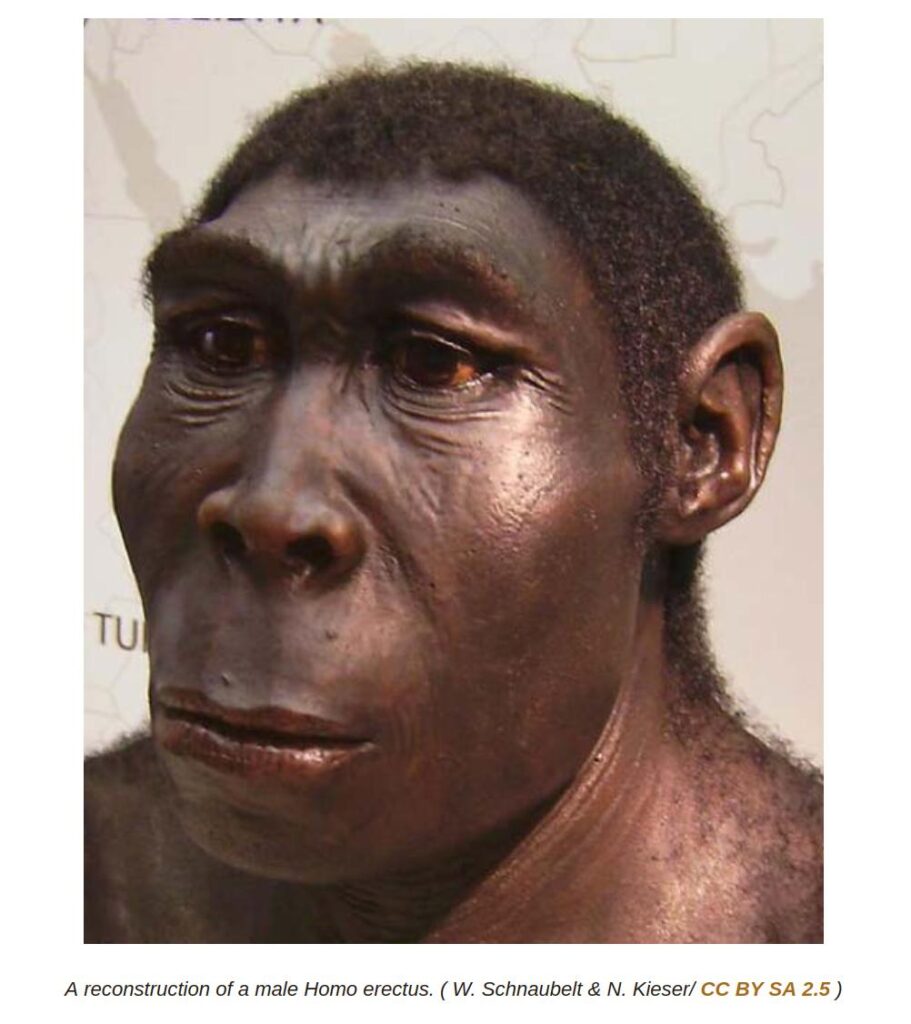
Megafauna Extinctions in the Pleistocene: Accelerated by Humans?
For most of the Pleistocene, humans did not significantly impact their environment. There were no more than a few hundred thousand individuals at a given time and their ability to transform the landscape was limited by primitive technology and limited social organization.
This all changed with the emergence of Homo Sapiens (modern humans) in Africa and Homo Neandertalensis (Neanderthals) in Europe. Anatomically modern humans first evolved in Africa around 200,000-300,000 BP. After the emergence of anatomically modern humans, something happened, perhaps a rewiring of the human brain , that led to the emergence of modern behaviors like art, blade production, long distance trade, and more efficient, organized hunting, among other abilities.
This change in behavior caused humans to have a significantly larger influence on their environment than in previous times. This can be seen in the fate of most megafauna, especially in the New World. Megafauna extinctions occurred around 40,000-50,000 years ago in Australia and around 13,000 years ago in North America. Both occurred shortly after the appearance of humans on these continents.

It has been suggested that the reason for the worldwide extinction of megafauna at that time was overhunting by humans combined with climate change. The climate was constantly changing during the Pleistocene and the megafauna survived these changes. When humans were introduced into the environment, however, these same megafauna populations died out not long afterwards. It is possible that the addition of a powerful predator, like humanity, may have added an extra factor that was just too much for the megafauna to handle while also adapting to climate change, leading to their extinction.
The Human Age: Life after the Pleistocene
As humans become more technologically advanced and more adept at manipulating their environment, they continue to influence it more and more. How much longer human civilization will last is uncertain, but one thing that is known is that humans are likely to leave a mark on this planet which will last for ages to come and it all started in the Pleistocene.

